How to Drain Gas From a Lawn Mower: Safe & Simple Methods
- March 1, 2024
- 1 comment
For those with gas-powered lawn mowers, understanding how to safely empty the gas tank is key, particularly for winter prep. Gas deteriorates over time, and leaving it in your mower during winter could lead to start-up issues in spring due to oxidation affecting the fuel’s quality. Note that while some high-quality, ethanol-free fuels may resist degradation, they’re rarely used in lawn mowers. To avoid leftover gas, simply run your mower until it’s out of fuel at season’s end. This clears the system. If you’ve accidentally left gas in the tank, you’ll need to drain it manually.
When to Drain Your Lawn Mower
- End of the Mowing Season: Before storing your mower for the winter, drain the fuel to prevent it from deteriorating and causing start-up problems in the spring.
- Before Repairs or Maintenance: If you’re planning to perform any repairs or maintenance that requires tilting or moving the mower in ways it’s not typically moved, draining the fuel can prevent leaks and spills.
- After Long Periods of Inactivity: If your mower has been sitting idle for an extended period, it’s wise to drain old fuel before adding fresh fuel to ensure optimal performance.
- When Fuel is Contaminated: If you suspect the fuel in your mower is contaminated with water or debris, draining it is necessary to prevent damage to the engine.
- Before Transportation: If you need to transport your mower, especially over long distances or where it might be jostled, draining the fuel can reduce the risk of leaks and spills.
Safety Precautions
Before You Begin
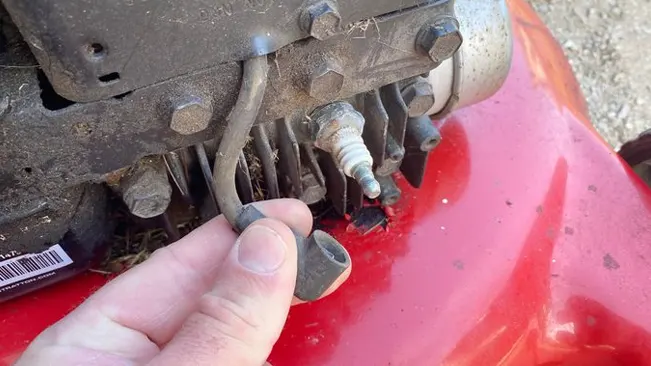
Before you begin the process of draining your lawn mower, make sure the machine is turned off and the engine has had time to cool down. This precaution is essential to prevent burns or any accidental ignition that might occur while handling the fuel. Additionally, it’s crucial to disconnect the spark plug. This simple step acts as a safety measure to ensure that the mower doesn’t start unexpectedly during the draining process, which could lead to injuries.
Protective Gear

When it comes to protective gear, there are several key items to wear for your safety. Durable gloves are a must to protect your hands not only from the gasoline but also from any sharp edges you might encounter inside the mower’s engine compartment. Safety goggles are equally important as they protect your eyes from potential splashes or flying debris. It’s also wise to wear long sleeves and pants to safeguard your skin from any spills and irritants. Lastly, always perform this task in a well-ventilated area. Gasoline fumes can be harmful if inhaled, so ensuring proper air circulation is critical for your health and safety.
Tools and Materials Needed
Siphon Pump

Is an indispensable tool for safely transferring gasoline from your lawn mower’s tank to a storage container. Its design allows for a controlled flow of fuel, eliminating the need for you to come into direct contact with the gasoline. This not only minimizes the risk of spills but also protects you from potential skin irritation caused by gasoline exposure. Utilizing a siphon pump simplifies the draining process, ensuring that the gasoline can be moved efficiently and cleanly from the mower to your chosen container.
Gas Can
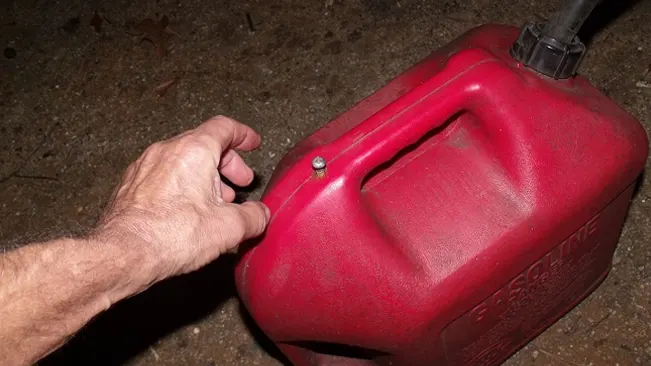
Having a reliable gas can is essential for holding the gasoline once it’s drained from your lawn mower. It’s important to use a container that’s specifically designed for fuel storage, as this ensures the gasoline is kept in a safe environment, reducing the risk of leaks or evaporation. Make sure the gas can is clean and free from any residues that could contaminate the gasoline. A good quality gas can is an investment in safety and convenience, providing a secure place to store the fuel until it’s needed again or properly disposed of.
Rags or Shop Towels
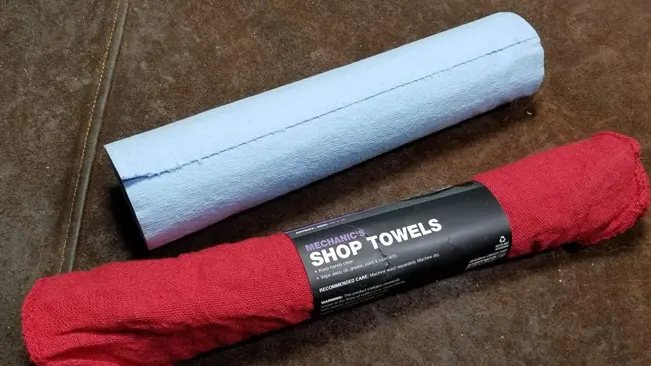
Rags or shop towels are a simple yet vital component of the gas-draining toolkit. No matter how careful you are, spills and drips can occur during the draining process. Having rags or towels on hand allows for quick clean-up, preventing the gasoline from causing damage or becoming a safety hazard. These towels are also useful for wiping down parts of the mower and your tools, ensuring that everything remains clean and free from gasoline residue.
Funnel
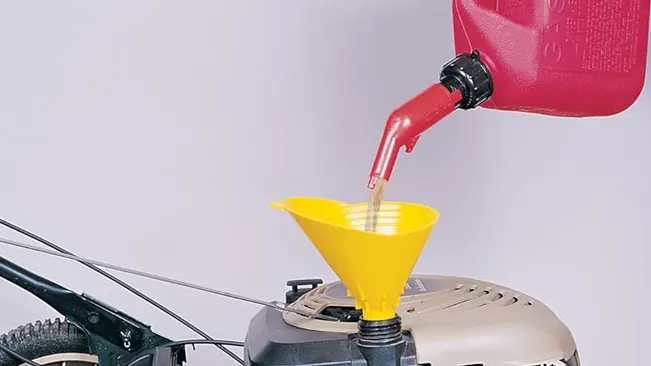
A funnel plays a critical role in preventing spills and ensuring a smooth transfer of gasoline from your mower to the storage can. It guides the fuel directly into the can, minimizing the chance of spills and wastage. A funnel is particularly useful when dealing with small openings or when you need to transfer fuel without spillage. This simple tool can make a significant difference in maintaining a clean, safe working environment while handling gasoline.
Step-by-Step Guide
Preparing the Lawn Mower
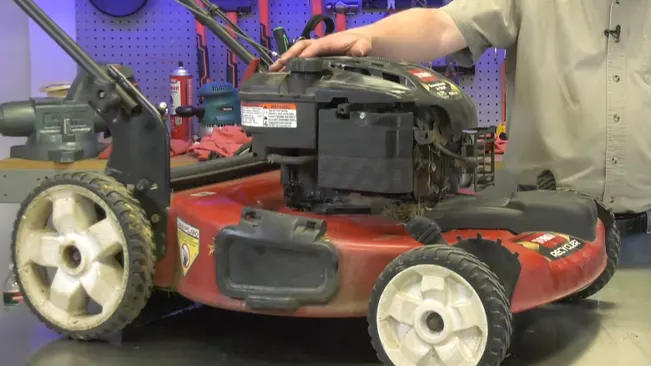
Before you start draining the gas, it’s essential to prepare your lawn mower to ensure the process goes smoothly and safely. Begin by ensuring the mower is on a stable, level surface and the engine is completely cool to avoid any risk of burns or ignition. Disconnect the spark plug to prevent the mower from accidentally starting, which could lead to serious injury.
Locating the Gas Tank

The next step is to locate the gas tank on your lawn mower. Typically, the gas tank cap is visible and marked, but if you’re unsure, refer to your mower’s user manual for guidance. It’s crucial to identify the tank correctly to avoid any mistakes during the draining process.
Choosing a Drainage Method
Decide on the method you’ll use to drain the gas. The two main methods are siphoning and using the fuel line. Siphoning involves using a pump to draw the fuel out of the tank, while using the fuel line method involves accessing the mower’s fuel line and allowing the gas to drain out. Consider the tools you have on hand and your comfort level with each method before deciding.
Method 1: Siphoning

For siphoning, you’ll need a siphon pump and a container to hold the gasoline. Insert the siphon pump into the mower’s gas tank, ensuring the other end is in your gas container. Pump the siphon to start the flow of gasoline, continuing until the tank is empty. This method is straightforward and minimizes the risk of spills.
Method 2: Using the Fuel Line
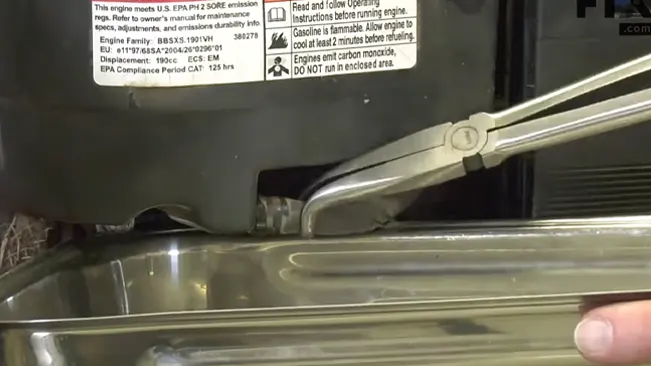
If you choose to use the fuel line method, locate the fuel line that runs from the gas tank to the carburetor. You may need pliers to loosen the clamp that secures the fuel line. Once loosened, gently pull the fuel line off and allow the gas to drain into your container. Be prepared for the gas to flow out quickly once the line is disconnected.
Disposal of Old Gasoline
Disposing of old gasoline in a safe and environmentally responsible manner is crucial. Over time, gasoline can degrade and become less effective as a fuel, making it unsuitable for use in your lawn mower or other equipment. Additionally, improperly disposed gasoline can pose serious environmental hazards, contaminating soil and water sources.
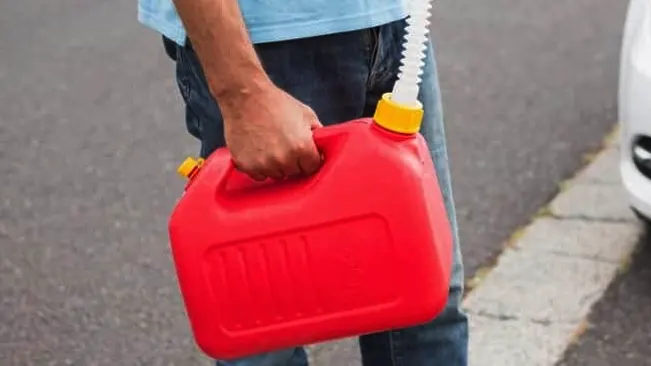
The first step in the disposal process is to transfer the old gasoline into a suitable container, one that is specifically designed for holding hazardous materials. It’s important to ensure that this container is clearly labeled and tightly sealed to prevent leaks and spills. Next, you should contact your local waste disposal facility or environmental protection agency to inquire about the proper disposal method for hazardous materials like gasoline. Many areas offer designated drop-off locations or special collection events for hazardous household waste. Never dispose of gasoline by pouring it onto the ground, into storm drains, or into the trash, as these actions can cause significant environmental damage and may also be illegal.
Reassembling and Testing
Begin by carefully reattaching any components that were removed during the draining process, such as the fuel line or the gas tank cap. It’s essential to ensure that all parts are securely fastened and properly aligned to prevent leaks or other operational issues. Pay particular attention to the connections and seals, as these are critical for the safe operation of your lawn mower.
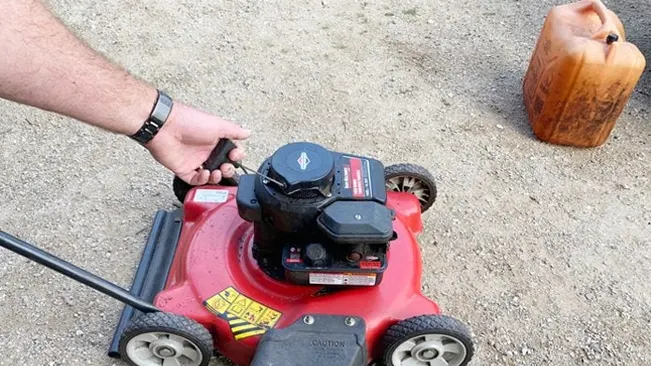
Once the mower is reassembled, it’s time to test its functionality. Start by adding a small amount of fresh, clean gasoline to the tank, ensuring not to overfill. Reconnect the spark plug if it was disconnected, and then attempt to start the mower according to the manufacturer’s instructions. Observe the mower’s operation carefully during this initial test run. It should start smoothly and run consistently without any unusual noises or behaviors. This testing phase is not only about ensuring the mower starts but also about verifying that the draining and reassembly process hasn’t inadvertently caused any issues. If everything appears to be in good working order, you can proceed with your lawn mowing tasks as usual, confident that your mower is ready for reliable service. If there are any problems, it’s important to troubleshoot and resolve these issues before using the mower extensively.
Maintenance Tips
- Regular Cleaning: After each use, clean the mower to remove grass clippings, dirt, and debris. This prevents buildup that can hinder performance and cause corrosion over time. Use a brush or cloth to clean the exterior and a hose to wash away clippings from the undercarriage, making sure the mower is dry before storage.
- Blade Care: The mower’s blade should be sharp for a clean cut, enhancing lawn health. Check the blade periodically for dullness or damage and sharpen or replace it as necessary. A sharp blade reduces the effort the mower needs to cut grass, improving fuel efficiency and reducing wear on the engine.
- Oil and Filter Changes: Regularly check the oil level and look for signs of contamination. Change the oil according to the manufacturer’s recommendations. Additionally, clean or replace air filters to ensure the engine receives clean air, which is crucial for efficient combustion and engine longevity.
- Fuel Management: Use fresh fuel with a stabilizer to prevent degradation, especially if the mower won’t be used for an extended period. At the end of the mowing season, drain the fuel as stale gas can cause starting problems and damage the engine.
- Regular Inspections: Before each use, inspect the mower for loose bolts, worn belts, and other potential issues. Addressing minor problems promptly can prevent more significant issues down the line.
- Seasonal Storage: When storing the mower for the off-season, clean it thoroughly, drain the fuel, and disconnect the spark plug. Store the mower in a dry, covered area to protect it from the elements and prevent rust.
- Professional Servicing: Even with diligent maintenance, professional servicing is recommended at least once a year. A service professional can perform a comprehensive check, including the engine, fuel system, and other components that might be difficult for the average user to assess and maintain.
Conclusion
In conclusion, properly draining gas from your lawn mower, along with observing essential safety precautions, is fundamental to the upkeep and longevity of your equipment. Utilizing the right tools and materials simplifies this process, ensuring a safe and effective operation. Following the step-by-step guide for draining, whether through siphoning or using the fuel line, prepares your mower for storage or maintenance while protecting it from potential damage caused by stale or contaminated gasoline. Proper disposal of old gasoline is crucial for environmental safety, and reassembling and testing your mower ensures it’s in optimal working condition. Regular maintenance, including cleaning, blade care, and timely replacements of oil and filters, further enhances your mower’s performance and durability. By adhering to these guidelines, you can enjoy a well-maintained lawn mower that provides reliable service season after season.
FAQs
- Can I reuse the gasoline I drain from my lawn mower?
Reusing gasoline depends on its condition. If it’s fresh and uncontaminated, you may reuse it in your mower or other compatible equipment. However, if the gasoline is old, degraded, or contaminated, it’s best to dispose of it properly to avoid damaging your equipment. - How often should I drain the gas from my lawn mower?
It’s advisable to drain the gas at the end of the mowing season or before any prolonged period of inactivity. This prevents the degradation of gasoline, which can lead to starting difficulties and potential engine damage. - What should I do if I accidentally spill gasoline?
In case of a spill, immediately absorb the gasoline with rags or absorbent material, and ventilate the area to disperse fumes. Dispose of the contaminated materials properly and avoid any ignition sources until the area is completely clean and fume-free. - Is it necessary to drain the gas if I use a fuel stabilizer?
While a fuel stabilizer can extend the shelf life of gasoline and reduce the need for draining, it’s still a good practice to drain the fuel if the mower will be unused for several months. This ensures the engine starts smoothly when you use it next. - Can I perform this task without any mechanical knowledge?
Yes, draining gas from a lawn mower can be done with minimal mechanical knowledge by following a step-by-step guide and taking proper safety precautions. However, if you’re unsure or uncomfortable with the process, consider seeking assistance from a professional.

Joel Cunningham
Forestry AuthorI'm Joel Cunningham, an expert in pruning and weed management with over a decade of experience. My skills are rooted in formal training and extensive practice, focusing on advanced pruning techniques and efficient weed control. I'm known for my quality work, precision, and deep understanding of plant health and soil dynamics. My contributions extend to educational initiatives where I share sustainable practices and advice, establishing myself as a reliable and authoritative figure in the gardening community.













Drain mower gas run engine till engine runs out of gas clean under deck replace air filter or clean change mower oil store for winter
Jerry
March 7, 2024 8:21 pm